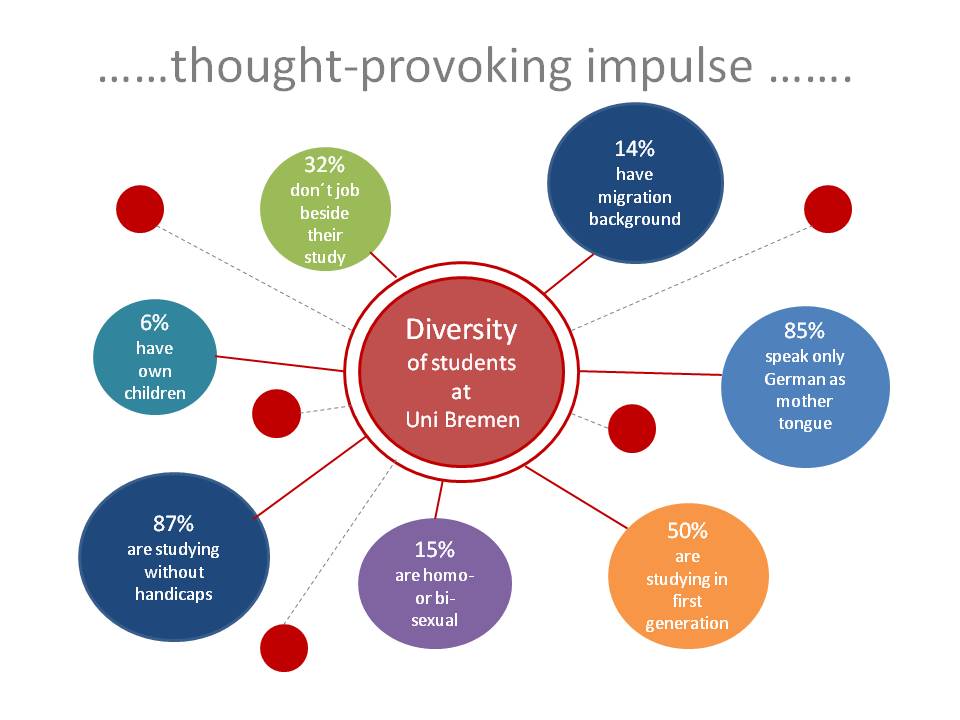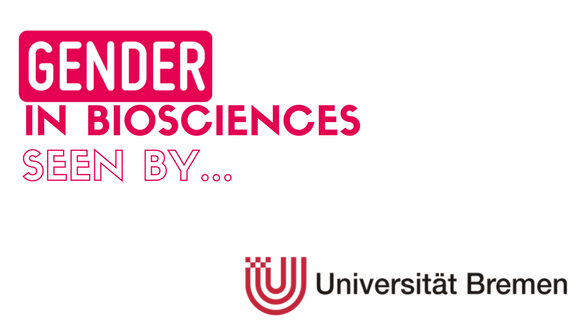How do you understand Gender in biosciences research?
Women are under-represented in research generally, and in STEM occupations specifically. The explanations for these patterns vary from discrimination of women and “glass-ceiling” effects, to implications of gender differences in household and family, and to modern men and women making different choices due to different life values and life priorities.
Historically, natural science has been perceived as a male domain. Today, gender in biology study programs is balanced up to and including the doctoral level (see Figure 1 – the proportion of men and women in Faculty 02 Biology and Chemistry at the University of Bremen). The critical point is the retention of women in and after the postdoctoral career level. In average, in academic biosciences in Germany only 15 per cent of Professors are female. The “leak” of women from the science pipeline means a regrettable waste of expertise. Gender diversity enriches scientific enquiry, promotes excellence, and opens the horizon for societal contextualized questions and research.

Figure 1. “Leaky pipeline” in the Faculty biology and Chemistry at the University of Bremen (based on the rector’s report University in Numbers, 2015)
What are the current standards and actions to achieve better Gender in the University of Bremen?
The Action Plan of Science 2020 of the Senator of Science and Research of the Federal State of Bremen states the need of cultivating a more gender-balanced environment at the institutions of higher education. Gender inequality in scientific careers undermines the principles of fairness, equality of opportunity and social justice.
Therefore, structural principles to cover gender-political measurements are in the core of the recently launched Diversity Strategy of the University Bremen “Diversity as a chance – recognizing, promoting, and designing”. It comprises seven guiding principles such as “the university as part of the society”; “diversity in and through research and teaching”; “inclusive approach”; “competence in respect to diversity”; “diversity as a factor for study success”; “empowerment and participation”; and “anti-discrimination”. The diversity strategy is a guiding principle for the dynamic development of the awareness and understanding of gender and diversity issues at the University Bremen (see figure 2 – thought-provoking impulse). It is triggered on central level as well as on faculty level. The Center of Gender Studies is a central institute for gender research in research and education. It supports the academic and political integration of women and develops new perspectives of interdisciplinary approaches.

Figure 2. Diversity of students at University Bremen (www.uni-bremen.de/diversity)
What are you aiming for with the implementation of the STARBIOS2 actions towards better Gender standards for your institute?
Our goal is to adopt the already existing general Diversity Strategy to the requirements of the Faculty 2 Biology and Chemistry. To raise the awareness of gender and diversity issues we will follow a process-oriented pathway. This comprises the cooperation with the central key-players of the diversity process (such as the women’s representatives, members of the department equal opportunities and anti-discrimination, members of the Center of Gender Studies, and the department family-friendly study). We will raise awareness for the “Code of Conduct” and will set measurements for an appreciate company of students and researchers by respecting their diversity. At institutional level we will discuss fostering and hindering elements for the academic and social integration of women in research groups.
What kind of actions are you going to establish to fulfill your objectives?
In the first year of the STARBIOS2 project we conduct an interview survey with members of our permanent focus groups students, doctoral students, and postdoctoral researchers. The findings form the basis for a questionnaire survey about the awareness of gender (and the other RRI keys), the degree of familiarity of gender measurements, and problems and needs in respect to gender issues. Target groups of the questionnaire survey are students and researchers of the Faculty Biology and Chemistry. Based on this state-of-the-art analysis we deduce recommendations for a RRI mission statement for biosciences and discuss them with the important stakeholders and in the focus groups. Furthermore, we will develop and offer two academic building blocks “Gender and Equity” and “Gender and Diversity in Biosciences” to raise the awareness of gender issues.
Who is involved in the action plan?
We follow a bottom-up – top-down implementation strategy. Therefore, all important stakeholders of the faculty as well as the members of the focus groups students, doctoral students and postdoctoral researchers are involved in all steps of our action plan. Our common shared goal is the development of RRI mission statement at faculty level. Therefore, we will work together with social scientists of the Center of Gender Studies, the department of equal opportunities and anti-discrimination, and the department family-friendly study. For the development of the training elements we will work together with the women´s representative and an expert for media pedagogy.
Read another blog post by the University of Bremen on Societal Engagement in Biosciences.








